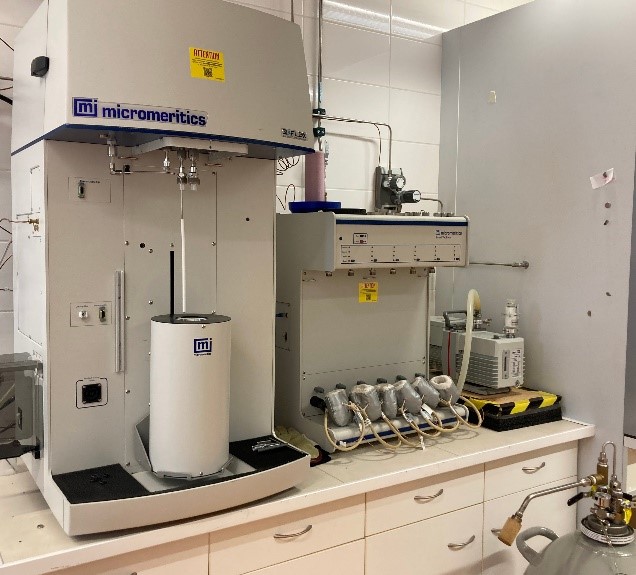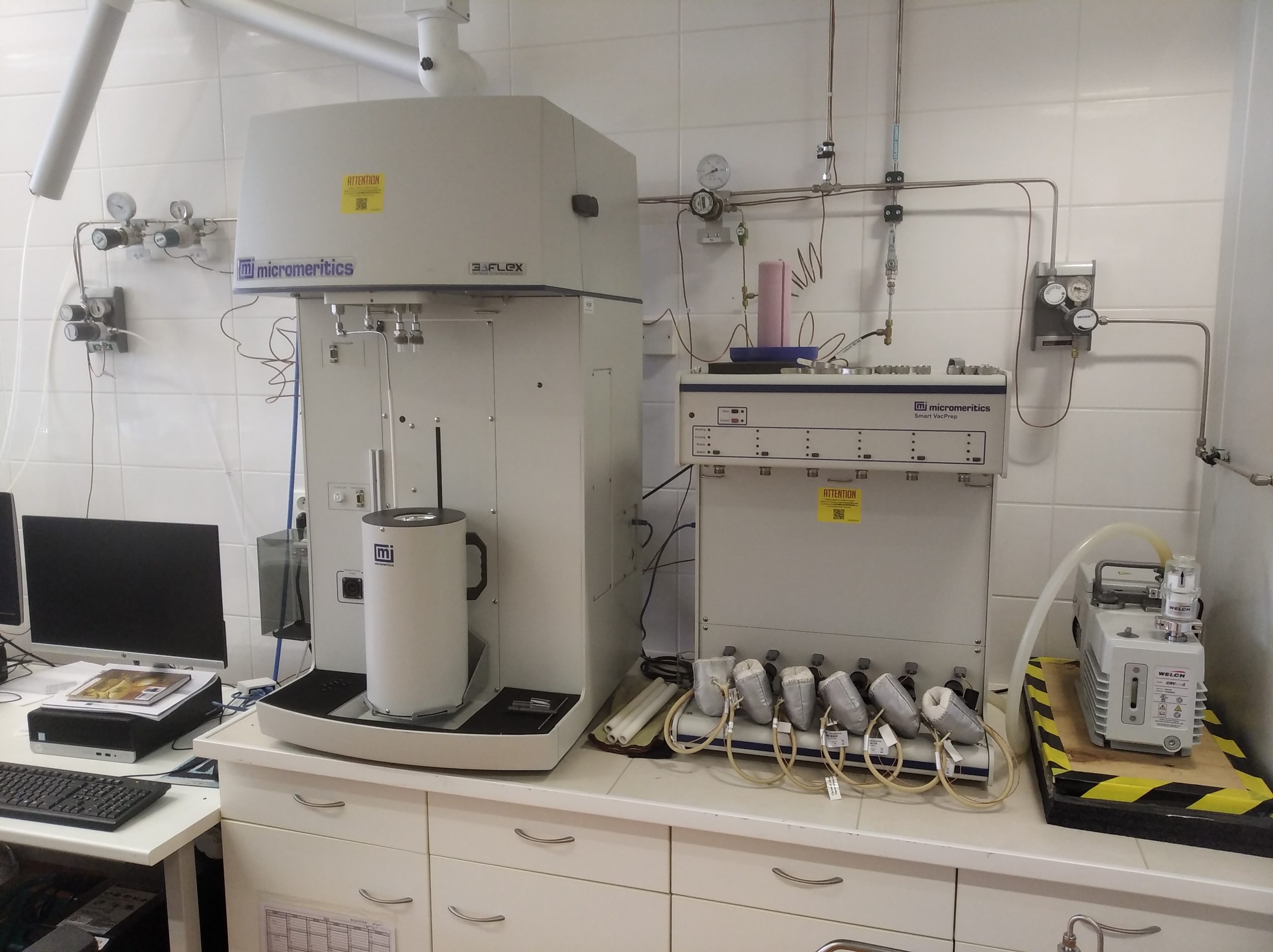Analyzer for measuring surface area, pore size and pore volume of powders and solid materials.
The instrument is used to characterize the surface of solids by volumetric method of adsorption study. Beside physisorption, chemisorption and dynamic analysis methods (temperature-programmed methods) can be measured.
Physisorption is carried out by sorption of nitrogen (77K). For more accurate characterization of microporous materials carbon dioxide (273K) can be used as adsorbent.
A separate degassing station for up to 6 samples is used for sample preparation and cleaning. Three samples can be measured simultaneously on the instrument.
Chemisorption allows us to analyze active sites on the surface of catalysts, sensors and other materials.
Dynamic analysis enables temperature programmed oxidation (TPO), reduction (TPR) and desorption (TPD) using hydrogen-argon mixture, helium or carbon dioxide as a probe/carrier gasses.




